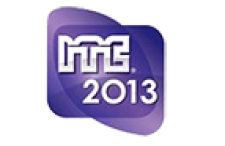Full compatibility with the soon-to-be-ratified IEEE P1687 Internal JTAG (IJTAG) standard for ASSET® InterTech’s ScanWorks® platform for embedded instruments will mean that developers and test engineers will have a powerful suite of IJTAG tools to ensure the standard’s rapid adoption in the industry.
At the International Test Conference (ITC) this week, ScanWorks is demonstrating how it supports the IJTAG standard’s Instrument Connectivity Language (ICL) and Procedural Description Language (PDL), two of the key components of IJTAG, which gives engineers the ability to manage, operate and automate instruments embedded in semiconductors. Engineers can use IJTAG embedded instruments to debug, validate and test the functionality and performance of complex chips, like systems-on-a-chip (SoC), as well as the circuit boards and systems where chips are deployed.
“Through our participation on the working group that’s been developing IEEE P1687 IJTAG, we’ve been able to promptly support the standard during its draft stages so engineers could begin working with it and experiencing all of the many benefits,” said Al Crouch, ASSET’s chief technologist and vice-chairman of the IEEE P1687 IJTAG working group. “Now that ratification is right around the corner, we expect that ScanWorks will fully support IJTAG when it is published in the first quarter next year.”
ASSET’s two IJTAG demonstrations at ITC will show ScanWorks’ compatibility with popular EDA tools from Synopsys and Mentor, and how embedded IJTAG capabilities can be migrated from chip-level test processes and re-used to perform board-level validation, test and debug with ScanWorks.
According to Ken Posse of Avago Technologies and chairman of the IJTAG working group, the IEEE balloting process for the standard has already begun.
“It’s gratifying to see companies like ASSET, Mentor Graphics and others supporting IJTAG with tools that have helped engineers get to know this new standard,” Posse said. “The proliferation of IJTAG tools and the emergence of a complete IJTAG ecosystem is an indication that we should see rapid and widespread adoption by the industry once the standard is ratified. Many chip companies already have experience embedding instruments into their chips. Soon they will have a standardized way of doing so.”


